New COVID testing sites arrive in NYC, but de Blasio and Schumer want more
As New Yorkers continued to wait in long lines to get COVID tests, Gov. Hochul and Mayor de Blasio announced new mobile testing sites around the city.
But many questions remained about testing availability over the weeks ahead.
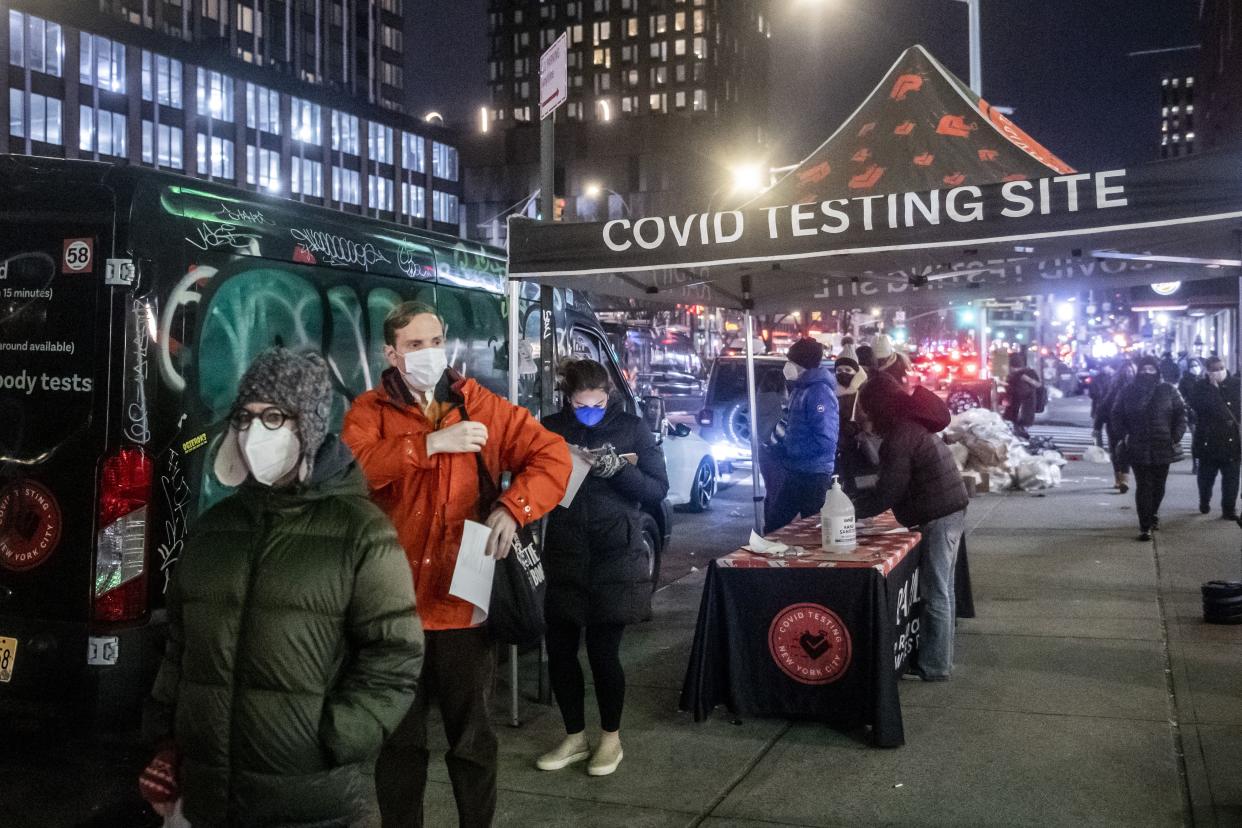
In a sign that the battle against the omicron variant is quickly evolving, de Blasio had few details Wednesday morning about when and where new testing sites would open, or how many at-home tests kits the federal government will deliver. Six federally funded mobile testing sites are expected to open in the coming days, as are seven more that the state will deploy at MTA subway stations.
Later on Wednesday, the Centers for Disease Control deployed a new testing unit to Travers Park in Queens, and on Thursday, it expects to send out two more — one to Queens Valley Playground in Flushing and another to the Helen Marshall Playground in East Elmhurst.
But de Blasio and Senate Majority Leader Chuck Schumer said that, while appreciated, the help from the federal government is not nearly enough.
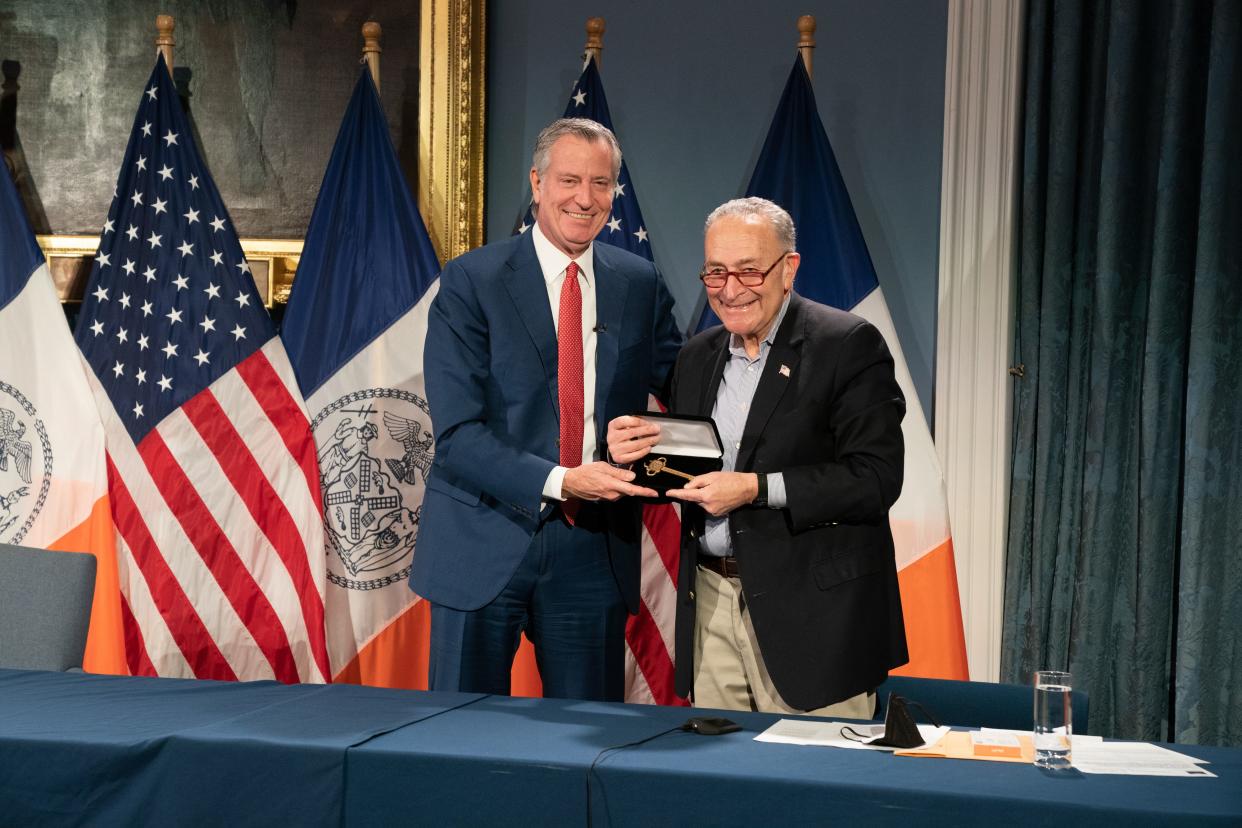
Schumer said he’s requested 100 additional mobile testing sites from the Federal Emergency Management Agency.
“We need these locations across the city,” he said. “Today, they said they’re sending six. That ain’t close to enough given the magnitude of the crisis and what we need.”
In a separate move, Hochul announced that two walk-in COVID test sites would open in subway stations on Monday, with an additional five expected to come online later in the week. The first two testing sites will be located at Grand Central Terminal and the Times Square-42nd St. station.

Less clear is how big a role home testing kits will play in the overall omicron equation. As of Wednesday morning, de Blasio remained unaware of how many at-home kits would come to the city as part of President Biden’s promise Tuesday to distribute 500 million rapid tests directly to Americans.
“The big x-factor for us will be the home test kits. If we get those in really big numbers, really soon that’s going to relieve a huge amount of pressure on the test sites,” de Blasio said. “But we’re still not 100% sure how much we’re going to get and when.”
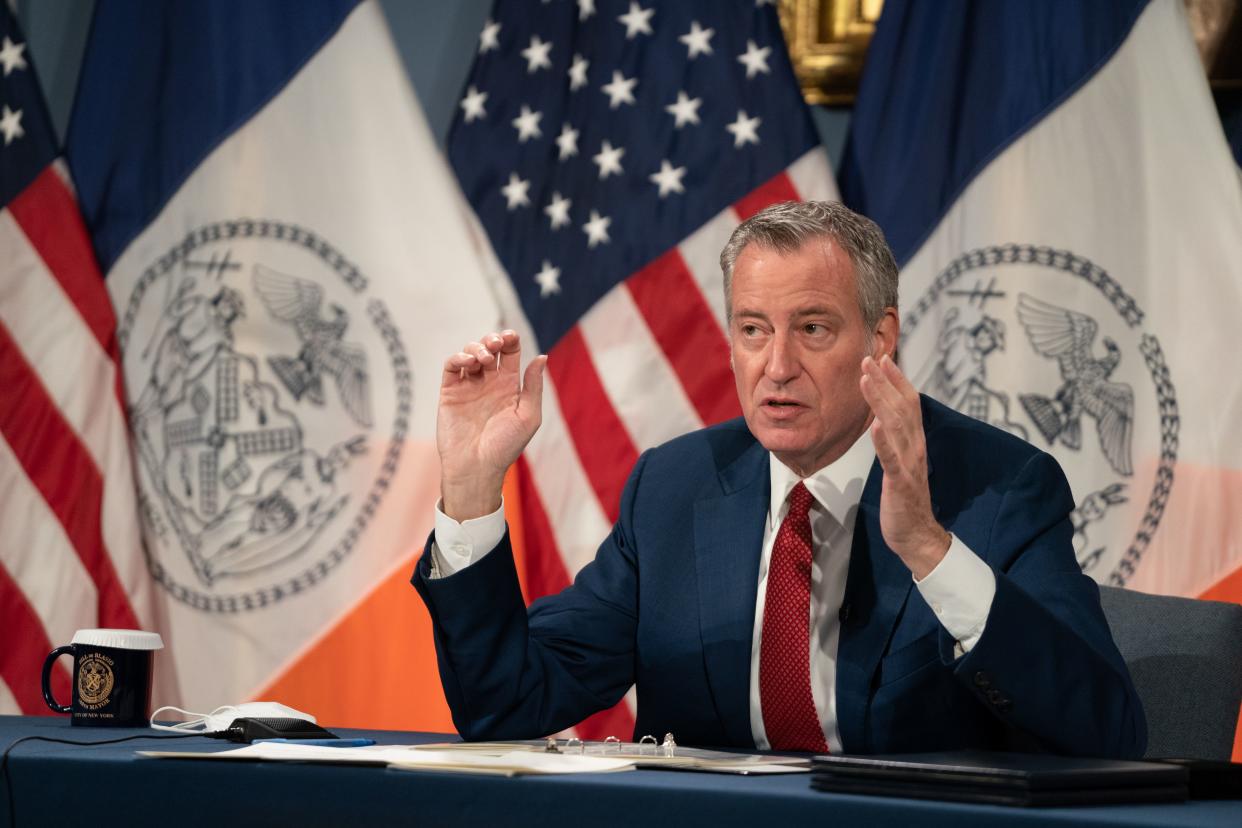
The head of the city’s Test & Trace Corps, Ted Long, estimated that the influx of home test kits could increase the city’s overall daily testing capacity to at least 200,000 tests per day. Currently, the city’s daily testing capacity is at just under 170,000.
“That’s a new record for us,” Long said of the current capacity.
The new testing sites now coming online are expected to increase the capacity even further — by about 25,000 tests per day.
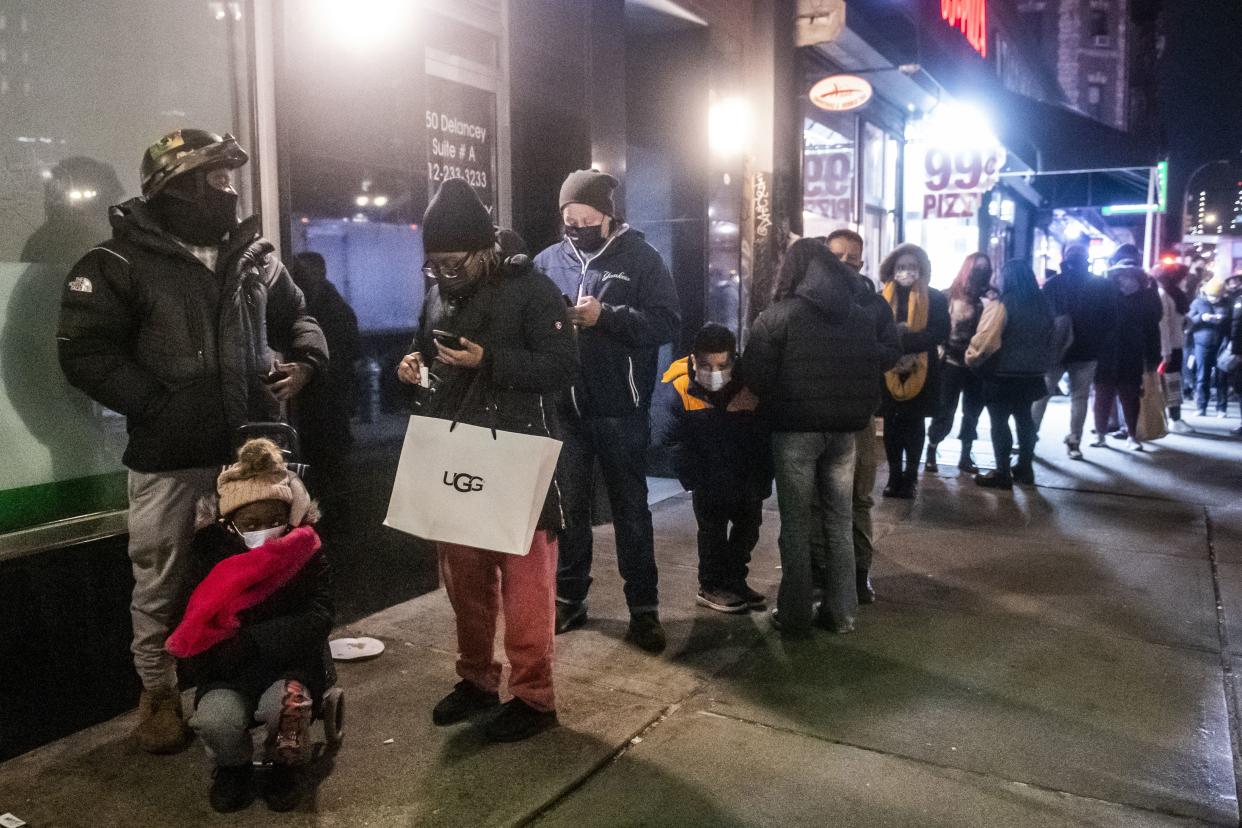
Over the past several days, the omicron variant has spread rapidly throughout the city and the U.S. De Blasio reported Wednesday that the seven-day average for new cases on a daily basis had climbed past the 10,000 mark — a substantial increase compared to the nearly 7,000 case average on Monday. Nationwide, omicron is now the dominant COVID variant.
Positive test results and close contacts have led to people having to isolate in large numbers once again. The isolation period proscribed by city health officials has been 10 days, but Health Commissioner Dr. Dave Chokshi said Wednesday that may be modified.
“We are following the science carefully here and speaking with scientists around the world to figure out if it may be possible, at least for certain groups, to shorten the duration of that isolation period,” he said.
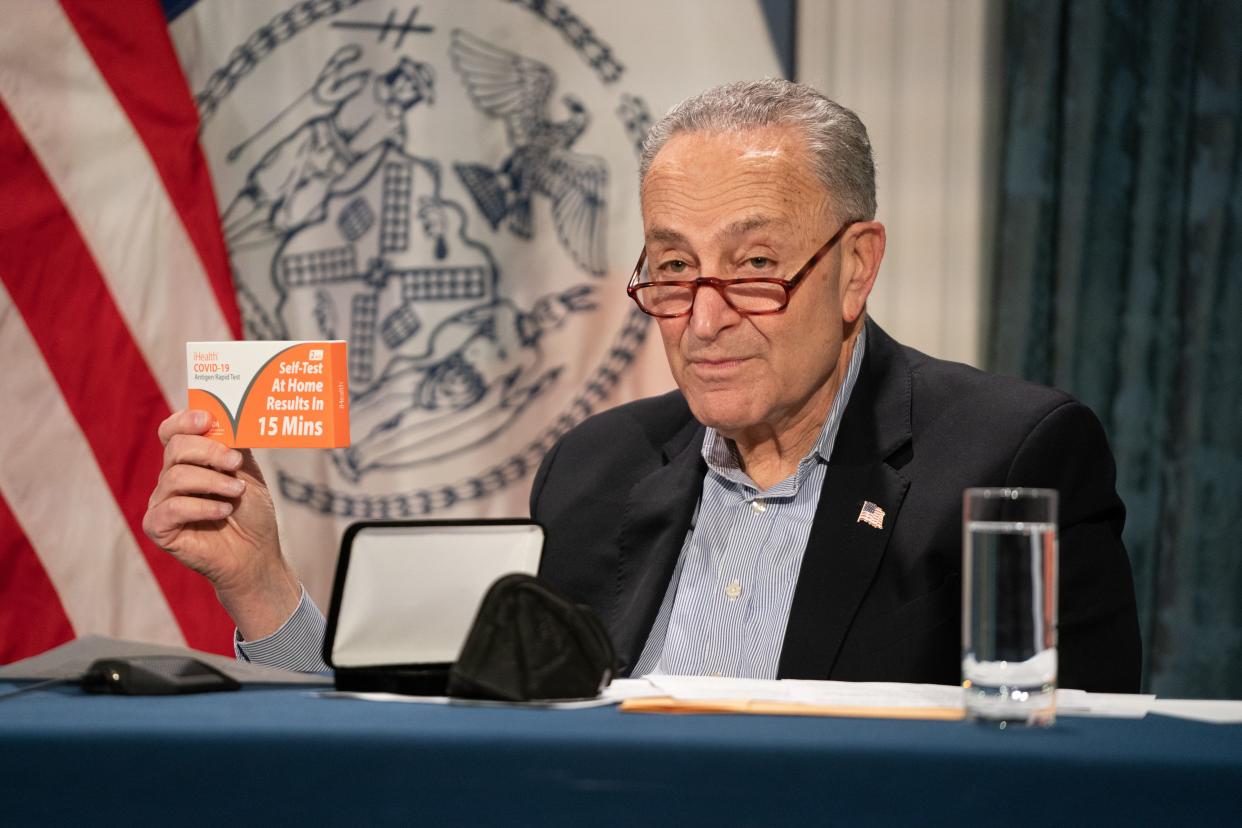
Chokshi noted that in other countries the isolation period has been reduced for vaccinated healthcare workers.
“We’re not quite ready to take that step, but it’s something we’re considering and deliberating on,” he said.
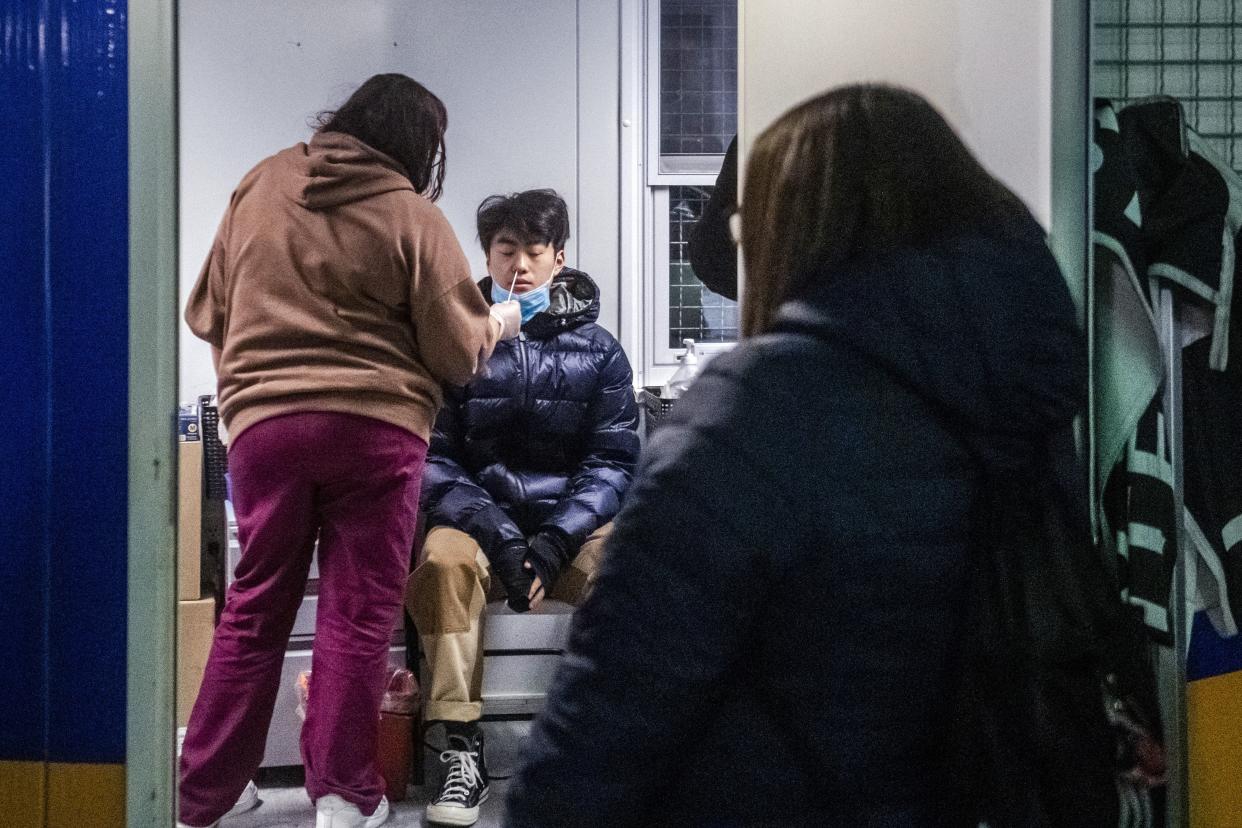
If approved, such a modification would likely allay the worries of Mitchall Katz, CEO of the city’s Health and Hospitals network. He noted Wednesday that what he’s most concerned about when it comes to the easily transmissible omicron variant is that the number of nurses and doctors who contract it could lead to potentially severe staffing shortages.
“Cases: huge increase. ICU: tiny increase,” he said of omicron’s impact thus far. “A lot of the preparation I’m working on is not because I’m worried about a deluge of sick patients. What I’m worried about is a large number of my own staff exposed to omicron, and therefore on 10-day isolations. That’s already been happening.”
